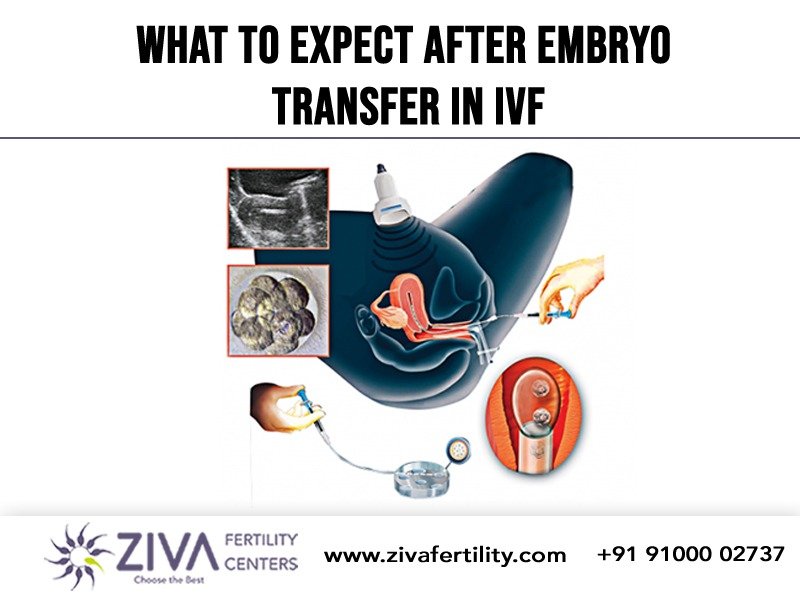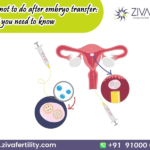ZIVA Fertility Center is the best IVF treatment centre in Hyderabad. We are best known for our high success rate in all assisted reproductive technology (ART) procedures. In-vitro fertilization treatment is one of the prominent ART procedures in which fertilizing the egg with the sperm happens outside the womb. Among all the Assisted Reproductive Technologies (ART), IVF has been proven to be the most efficient way for couples to get pregnant when they cannot conceive naturally. For natural pregnancy to occur, sperm travels through the uterus to either one of the fallopian tubes, where a mature egg is waiting to be fertilized. When the sperm meets this egg, the resulting embryo must be of good quality for implantation to occur. At the outset, this entire mechanism is so beautifully set up naturally. However, multiple factors such as a low sperm count, fallopian tube or uterus issues, poor quality eggs or sperm can prevent natural pregnancy. Amongst all these factors, when the sperm and egg are unable to meet on their own, or egg or sperm quality is lower than desired, IVF may be an option.
How does an IVF work?
Fertility drugs are self-administered daily to stimulate the ovaries to mature numerous eggs in the month of the treatment cycle. During IVF, the first process is to retrieve eggs from the ovaries or donor eggs may also be used. With ultrasound visualization, our fertility expert will guide a needle through the vagina wall and into the ovaries to collect the eggs. A mild anaesthesia is administered.
These eggs are fertilized in an embryology lab either by the male partner’s sperm or donor sperm. To determine if fertilization is successful, one has to wait for 18 hours and another 2 to 4 days to establish whether the embryo is optimally developing. After staying in the lab for five days, the embryos are inserted into the uterus, where they are ideally implanted and create a pregnancy. Success depends on a person’s age, response to the medication, and the quality of the eggs and embryos produced.
Embryo Transfer Process
To enhance the chances of success, one or more embryos are transferred. A long, thin catheter filled with a pre-determined number of embryos and a small amount of fluid is passed through the cervix into the uterus. The embryo(s) are released into the uterus. After the insertion, an abdominal ultrasound is done to ensure optimal placement in the uterus. For several days after the transfer, rigorous physical activity should be avoided.
What happens after an Embryo Transfer?
After a blastocyst embryo transfer, pregnancy can be detected in about nine days. Below is the 9-day journey after the embryo transfer:
- Day 1: The blastocyst hatches out of its shell.
- Day 2: The blastocyst begins to attach itself to the uterus.
- Day 3: The blastocyst profoundly attaches to the uterine lining, and implantation begins.
- Day 4:Ongoing Implantation process.
- Day 5: The implantation process is completed. Cells that eventually become the placenta and fetus start developing.
- Day 6: The hormone Human chorionic gonadotropin (hCG), which indicates pregnancy, starts to enter the bloodstream.
- Days 7 and 8: Fetus continues to develop with continuous hCG secretion.
- Day 9: There is enough HCG level in the maternal blood and the couple can take a pregnancy test.
What are the DOs after an Embryo Transfer?
Pamper yourself for the next couple of days
After embryo transfer, the main expectation is implantation. Relax and rest, and catch up on your favourite TV shows. Avoid rigorous workouts and heavy exercises.
Continue taking medications
In the early weeks after the transfer, the Progesterone hormone gives the pregnancy the best chance to continue, so it’s typically used in assisted reproduction like IVF. It also assists the embryo implantation in the uterus.
Healthy diet
Eat a diet rich in a variety of fruits and vegetables and foods rich in calcium, protein, B vitamins, and iron. Start taking folic acid. To prevent neural tube defects, you need 400 mcg of this critical B vitamin.
What are the DONTs after an Embryo Transfer?
Avoid having sex – Sexual intercourse triggers uterine contractions and can disrupt the embryo transferred into your body. In the worst cases, it can prevent the embryo from implanting in your uterus or lead to a miscarriage.
Don’t take a pregnancy test right away – Until a couple of weeks after the embryo transfer, the placenta cells will not produce enough human chorionic gonadotropin (hCG) hormone for the blood test to detect.
Ignore troubling symptoms – While taking fertility medications, you may develop a condition called ovarian hyperstimulation syndrome (OHSS) and experience symptoms like:-
- Abdominal pain
- Abdominal bloating
- Nausea
- Vomiting
- Diarrhoea
Not everyone experiences these symptoms with the same intensity. If there is a sudden weight gain or you feel severe pain in your belly, don’t wait and call your doctor.
We at ZIVA fertility center, take the utmost care ever since you decide to get an IVF. We are with you in every step of the process and will guide you through and be your personal friend in the entire IVF process. Visit our website, https://zivafertility.com/ and reach us at +91-9100002737, +91-9392834024 or info@zivafertility.com.
















